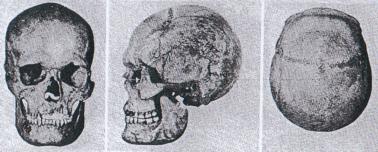
[Torgersen, 1976]
The "Nordish" concept of the American racialist author Richard McCulloch, has provoked a great deal of debate on the Internet, both for and against, particularly with reference to McCulloch's Racial Compact webpage. Throughout my Racial History Research website, I have frequently employed the term "Nordish". Therefore, is the use of this term meaningful, and is the Nordish concept a valid one?
Perhaps the argument most frequently employed against the Nordish concept, is the idea that it finds no justification in the works of "serious" anthropologists, and specifically that Carleton Coon did not support the idea in his monograph The Races of Europe (1939), which is generally held to be the keystone of McCulloch's conception. However, Coon was not the only physical anthropologist of the twentieth-century, and we must therefore consider the work of other scholars as well. Before doing so, it may first prove useful to precisely define exactly what we mean by the term "Nordish".
 |
[Torgersen, 1976] |
McCulloch divides the Nordish bloc into two major groupings: Central and Peripheral. The Central Nordish group is in turn further subdivided into an inner core of root types, and a series of stabilised blends. The inner core consists of Nordics (Hallstatt and Keltic), Brünns and Borrebys. The Anglo-Saxon, Trønder and Fälish types are simply hybrids, formed from various mixtures within the Central Nordish root types. The Peripheral Nordish subraces: North-Atlantid, Paleo-Atlantid, Neo-Danubian, East Baltic, Noric and Sub-Nordic, are merely hybrids between the Central Nordish types and non-Nordish European races (Mediterraneans, Dinarics, Alpines, etc). Subsequently, because a considerable portion of the Nordish types are hybrids, the really valid aspect of the Nordish concept lies in the core of the Central Nordish root types (Nordic, Brünn and Borreby). The other types have become racially assimilable due to admixture, and geographical proximity, which has allowed for a certain amount of phenotypical and genotypical convergence. The question must therefore be asked: can the idea of a Central Nordish bloc be justified?
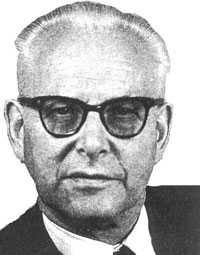 |
(1892-1965) [Schwidetzky et al., 1992] |
The answer to this question may be found in the works of the German physical anthropologist Egon von Eickstedt. Eickstedt is generally considered one of the greatest anthropologists of the last century, and certainly the most important and influential taxonomist of the various human races; cf. Schwidetzky et al. (1992). Naturally, since our enquiry here concerns taxonomy, and the classification of the European races, Eickstedt's work will prove to be of great value. In his magnum opus, titled Rassenkunde und Rassengeschichte der Menschheit [Raciology and Racial History of Mankind] (1934), Eickstedt classified the indigenous subraces of Northern Europe under a single label: die nordische Rasse (the Nordic race). [NB: Eickstedt sometimes labelled this race "Nordic" (nordische), but at other times he preferred the more scientific term "Nordid" (nordide).] He then divided this group into three major subraces.
 |
 |
(Teuto-Nordic) [Eickstedt, 1934] |
|
The first type was the teuto-nordische Unterrasse (Teuto-Nordic subrace). This subrace is the classic Nordic race: tall, slender, narrow-faced, long-headed, fair-skinned, blond-haired and blue-eyed. This of course, is the archetypal "Scandinavian" type.
 |
(Dalo-Nordic) [Eickstedt, 1934] |
The second type was the dalo-nordische Unterrasse (Dalo-Nordic subrace). This subrace is the modern survival of the old Crô-Magnon race: tall, robust, broad-faced, long-headed, with light hair and eyes. This is Günther's Phalian racial type.
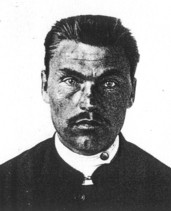 |
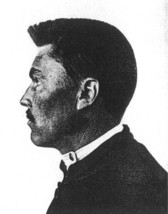 |
(Fenno-Nordic) [Eickstedt, 1934] |
|
The third and final type was the fenno-nordische Unterrasse (Fenno-Nordic subrace). This subrace is characterised as having reddish-blond hair, "water-blue eyes" (wasserblau Augen), an angular body-build and often, quite broad heads. According to Eickstedt, this type is more common in Eastern, rather than Western Europe, particularly amongst the Finnic tribes, hence its name.
 |
(Dalo-Nordic and Teuto-Nordic) [Eickstedt, 1934] |
A careful scrutiny of this typological scheme reveals clear parallels between Eickstedt's nordische Rasse and McCulloch's Central Nordish group. The Teuto-Nordic subrace of Eickstedt is clearly McCulloch's two Nordic racial types. The Dalo-Nordic subrace of Eickstedt is clearly McCulloch's Brünn racial type. Finally, the Fenno-Nordic subrace of Eickstedt has certain similarities with McCulloch's Borreby racial type: a tendency towards rufosity, light eyes, broad-headedness and a coarse body-build. This match is hardly precise, but the physical features of these two types converge more than they diverge. At any rate, the Eickstedt racial scheme clearly allows for three main categories within the Northern European racial type, as with McCulloch's scheme.
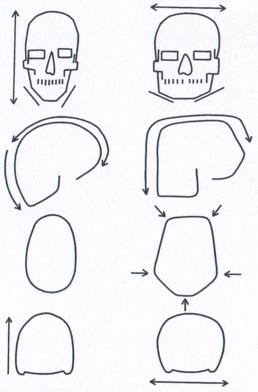 |
[Gerhardt, 1976] |
An even more explicit confirmation of the Central Nordish typology, can be found in the works of the Swiss physical anthropologist Kurt Gerhardt. Gerhardt (1976) begins his analysis of Nordid ethnogenesis by returning to studies of Upper Palaeolithic skeletal remains. The ancient peoples of Palaeolithic Europe were remarkably homogenous he argues, and the physical forms which were manifest among them, merely represent extreme varients of a common type. However, Gerhardt points out that this variation within the Upper Palaeolithic groups may be broadly classified into two distinct evolutionary tendencies: a Leptomorphic Aurignacid and a Eurymorphic Cromagnid. From these two physical types, Gerhardt derives the bulk of all living Northern Europeans. The Aurignacid evolved into the Robust Leptodolichomorph type, which Gerhardt terms "Teuto-Nordid". The Cromagnid, in a slightly gracilised, Eurydolichomorph form, became the Dalo-Nordid type.
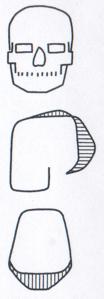 |
[Gerhardt, 1976] |
Gerhardt (1969) discusses the evolution of the third type a little more extensively. He notes that the originally Dolichomorph Cromagnid eventually evolved a physically Brachymorph varient. Gerhardt displays in schematic form, exactly how it would be possible to derive the Brachymorph type from its Dolichomorph parent stock. Gerhardt observes that, for the most part, the so-called Borreby type belongs to this racial form: he particularly identifies Borreby Male #8 as belonging to this type. Gerhardt considers the Borreby varient of this biodynamic trend to be distinctly Northern European. Gerhardt argues that many Bronze Age Danish brachycranic skulls have been erroneously classified as "Borreby". For Gerhardt, only the Brachymorph Cromagnid type may be considered truely "Borreby" in form, though it is by no means unique to the Borreby site, or even Denmark. Indeed, in the Finnish and Baltic realm, the Brachymorph Cromagnid became what Gerhardt labels the "Fenno-Scandid" type. Thus, Eickstedt's final "Finnic" type is accounted for.
What are we to make of the data above? I believe that it may be summarised as follows:
In conclusion, the Central Nordish concept of Richard McCulloch is thoroughly sound, and its intellectual and scientific justification may be found in the anthropological works of Egon von Eickstedt and Kurt Gerhardt.
Coon, C. S. (1939) The Races of Europe (New York: Macmillan).
Eickstedt, E. von (1934) Rassenkunde und Rassengeschichte der Menschheit (Stuttgart: Ferdinand Enke).
Gerhardt, K. (1969) "Der sogenannte Borreby-Typus." Homo, 20, 141-159.
Gerhardt, K. (1976) "Anthropotypologie der Glockenbecherleute in ihren Ausschwärmelandschaften." J. N. Lanting & J. D. van der Waals [eds.] Glockenbecher Symposion (Oberried, 1974) (Haarlem: Fibula-van Dishoeck), 147-166.
Schwidetzky, I., A. Kandler-Pálsson, R. Knußmann & F. W. Rösing (1992) "Biographie: Egon Freiherr von Eickstedt (10.4.1892 – 20.12.1965)." Homo, 43, 3-28.
Torgersen, J. (1976) "Rassengeschichte von Skandinavien." I. Schwidetzky [ed.] Rassengeschichte der Menschheit, 4. Lieferung. Europa II: Ost- und Nordeuropa (Munich: R. Oldenbourg), 103-145.
Karl Earlson: Phalians
Richard McCulloch: Racial Compact
SNPA: Race Gallery